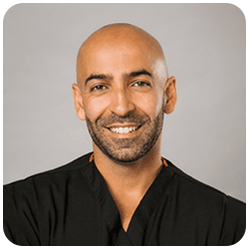If you’re experiencing chronic pain that impairs your daily life, it’s important to get the most effective and fast-acting treatment to manage your pain. For some medical conditions and individuals, the best treatment for chronic pain is infusion therapy.
Hasan Badday, MD, the board-certified pain management specialist at Pacific Pain & Regenerative Medicine in Irvine and Los Angeles, California, recommends infusion or IV therapy as a convenient, safe, and effective form of pain management for many medical conditions. Discover ten conditions infusion therapy is highly effective against, and what the process of getting infusion therapy is like.
What is infusion therapy?
Infusion or IV therapy is an in-office procedure performed using an IV machine. While you’re hooked up to the IV machine, you receive pain-relief medication that goes directly into your bloodstream, offering fast relief.
Infusion therapy is particularly effective for medications that don’t work orally, need to get into your bloodstream quickly, or need controlled dosing. The medication you receive during IV therapy is tailored to you based on your consultation with Dr. Badday.
10 medical conditions to consider treating with infusion therapy
Infusion therapy is an effective pain management treatment for a number of conditions. Ten of these include:
- Neuropathy
- Fibromyalgia
- Cancer
- Complex regional pain syndrome (CRPS)
- Migraines and headaches
- Post-stroke centralized pain
- Reflex Sympathetic Dystrophy
- Trigeminal Neuralgia
If you have any of these or similar conditions and are interested in exploring infusion therapy as a treatment for your pain, make an appointment with Pacific Pain & Regenerative Medicine.
The infusion therapy process
Before you get infusion therapy, Dr. Badday consults with you and decides if infusion therapy is the best pain management treatment for your situation. He develops a treatment plan to determine the type and amount of medication, as well as the number of sessions you need.
Getting infusion therapy is a simple, fast, and relaxing treatment. You can get infusion therapy at either of Dr. Badday’s offices in Irvine or Los Angeles.
Our team starts off by making sure you feel comfortable before treatment begins. Then the area where your IV will be inserted is carefully cleaning and sterilizing. Next, Dr. Badday places the IV into your arm.
Through a drip that combines your pain relief medication and saline solution, the mixture moves into your bloodstream. Throughout the infusion therapy, Dr. Badday and his team monitor your vitals carefully.
Your infusion therapy appointment lasts from 30-60 minutes, depending on the treatment you’re getting. The majority of people who get infusion therapy sleep during their appointment.
If you’re experiencing chronic pain and need relief from your symptoms, infusion therapy could be right for you. For more information, call our office most convenient for you or book an appointment online today.









